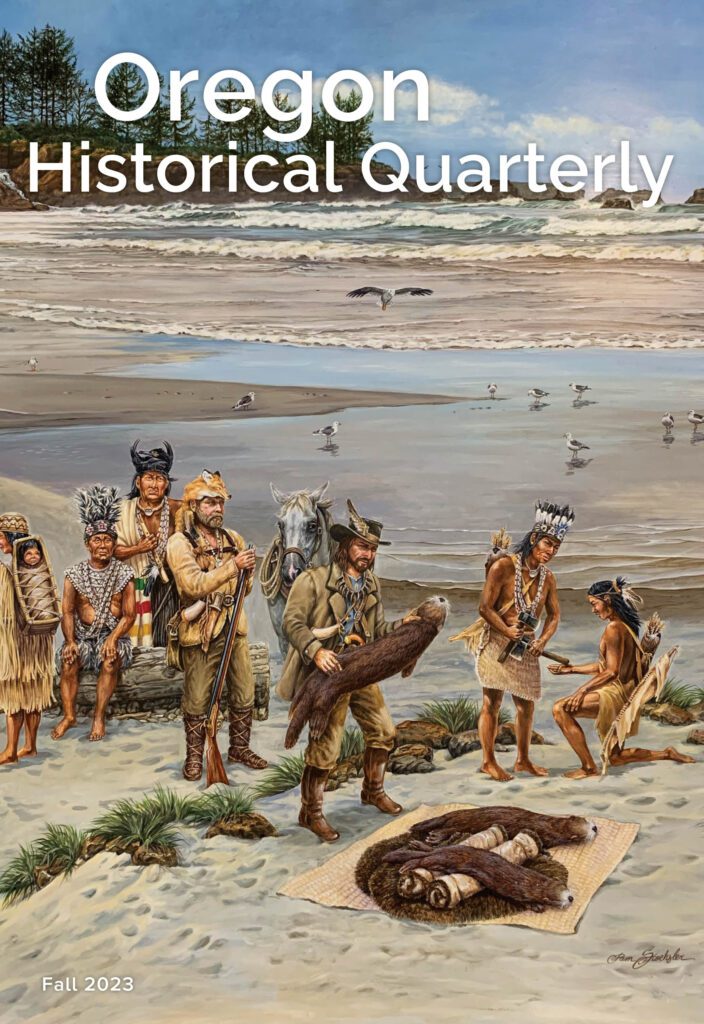Press Release from Oregon Historical Quarterly: A special section of the Oregon Historical Society’s Oregon Historical Quarterly highlights sea otter history in the Pacific Northwest
Note: Elakha Alliance Board Memebers Cameron La Follette & Peter Hatch were both authors of some of these publications.
Oregon’s nearshore waters were once the homeland to thousands of sea otters, an iconic species in the history of what is now known as Oregon. Sea otters have held a special role in the cultural, spiritual, and economic life of coastal Native American communities, with oral traditions documenting the species’ significance. Their lustrous pelts brought great wealth in late eighteenth- and nineteenth-century China, motivating Euro-Americans to broker some of the earliest contact and trade between themselves and Native American people along the Oregon coast. Over a century of zealous hunting and trading of sea otters, by Native people and Euro-Americans, eliminated the species from Oregon’s coastal waters over 100 years ago.
In a special section of the Fall 2023 issue of the Oregon Historical Quarterly (OHQ), “Sea Otters in Oregon,” local scholars explore the existence and significance of the species in the region, drawing on academic work, archival records, archaeological findings, and Native oral tradition to trace the history of this now-absent ecological and cultural keystone species. Although most accounts of the extirpation of sea otters from the Oregon coast focus on the well-documented international maritime fur trade of the late eighteenth and early twentieth centuries, the authors reveal historical records that demonstrate sea otters persisted much later.
In “Glimpses of Oregon’s Sea Otters,” Cameron La Follette and Douglas Deur introduce the history of Oregon’s now-extinct sea otter population, describing the emergence of the Chinese market that created and sustained the hunt, the British discovery of potential profits of trading sea otter pelts, and the rise of American traders.
Douglas Deur, Peter Hatch (Hanis Coos, Siuslaw), and Hannah Wellman explore the complimentary lines of evidence of sea otters’ significance among Native oral tradition and archaeological findings in “The House Full of Otters: Recalling Human-Sea Otter Relationships on an Indigenous Oregon Coast.” Native oral traditions recall a rich history of human encounters with sea otters and speak of the species’ ubiquity, significance, and sentience. Archaeological evidence of sea otter use, found on sites along the Oregon coast, further attest to this longstanding relationship.
In “The Invisible Slaughter: Local Sea Otter Hunters on the Oregon Coast,” Cameron La Follette, Richard Ravalli, Peter Hatch, Douglas Deur, and Ryan Tucker Jones uncover a long-ignored history of sea otters continuing to inhabit the Oregon coast, although in diminishing numbers, much later than the early nineteenth century, when well-documented accounts associated with international maritime history place their drastic decline and regional extirpation. Their research suggests that sea otter extinction on the Oregon coast (and Washington and California as well) resulted from household-scale hunting by Native Americans and Euro-American settlers from the mid-nineteenth century until around 1910.
Many of the authors of the special section are board members or advisors of the Elakha Alliance, a nonprofit organization with a mission to “restore a healthy population of sea otters to the Oregon coast and to thereby make Oregon’s marine and coastal ecosystem more robust and resilient.” Elakha (ee-LAK-uh), a Chinook word for sea otter, was resurrected in 2018 after some inactive years by tribal, nonprofit, and conservation leaders who are aware that the sea otter is considered a keystone species, and that Oregon’s nearshore marine ecosystem has suffered as a result of their absence.
As the journal of record for Oregon history, the Oregon Historical Quarterly publishes well-researched, well-written history about Oregon and the Pacific Northwest for both scholars and general readers. Nearing its 125th volume year, OHQ amplifies knowledge and perspectives that traditional scholarship has often silenced and sparks relevant conversations about history.
The Fall 2023 issue of the Oregon Historical Quarterly is now available for purchase in the Oregon Historical Society’s Museum Store for $10, and a subscription to OHQ is a benefit of Oregon Historical Society membership. Abstracts for the articles featured in this special issue are available online.
About the Oregon Historical Society
For more than a century, the Oregon Historical Society has served as the state’s collective memory, preserving a vast collection of objects, photographs, maps, manuscript materials, books, films, and oral histories. Our research library, museum, digital platforms, educational programming, and historical journal make Oregon’s history open and accessible to all. We exist because history is powerful, and because a history as deep and rich as Oregon’s cannot be contained within a single story or point of view.


